Pebble Beach car show boasts of greater diversity
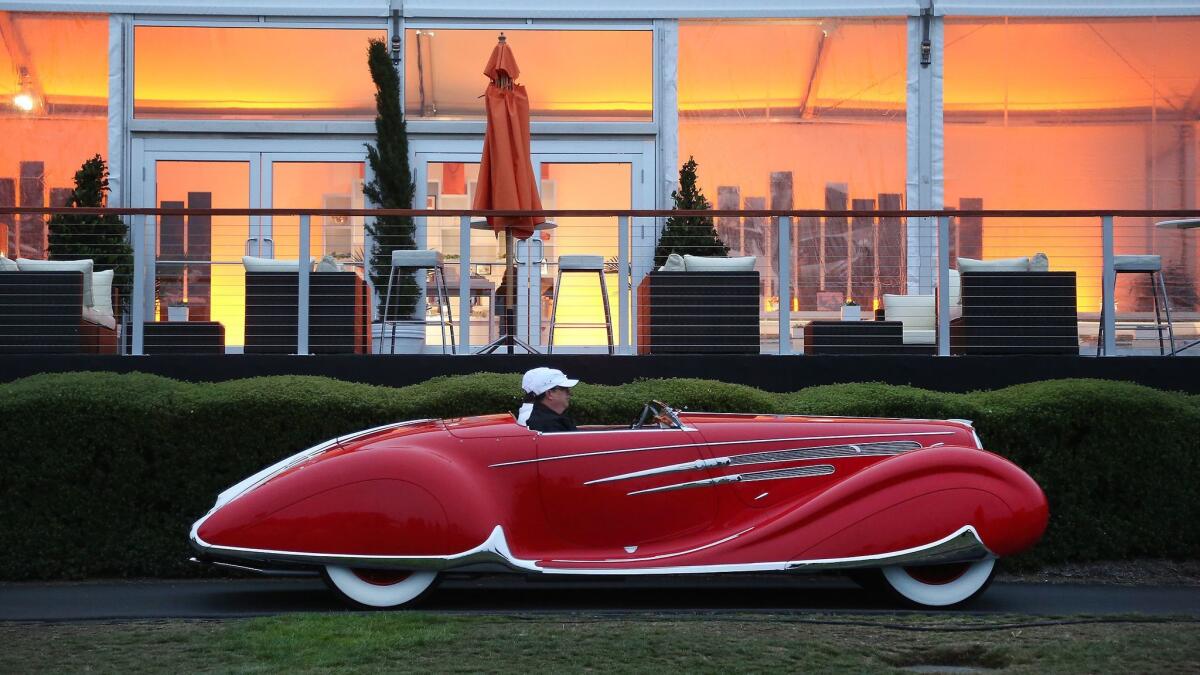
- Share via
Organizers of the upcoming 67th Pebble Beach Concours d’Elegance say there will be something new on the storied 18th green this year: diversity.
The glamorous automotive beauty contest, held Sunday and capping a weeklong cavalcade of car shows, auctions and rallies, attracts the world’s wealthiest and most influential collectors of rare, antique and vintage vehicles.
Long a bastion of white male wealth, it is a playground for high-income hobbyists who spend millions acquiring rare vehicles and millions more restoring them.
The show is open to all applicants, who are invited to attend solely on the merits of their cars. While no covenant or convention precludes women or people of color from participating, the prestigious gathering has traditionally attracted a very homogeneous crowd.
That may be changing. This year’s Concours, event officers and observers say, will see an unprecedented number of new faces, from new countries, including members of groups not previously represented.
More car collectors and automotive journalists than ever before will be attending from China, Japan, India, Thailand, Hong Kong, South Africa, New Zealand, Russia and Ukraine. And more women are expected to participate as well.
Concours d’Elegance’s Sandra Button, who has been affiliated with the event for 32 years and was named chairman in 2002, said that 25% of this year’s show cars will come from outside the U.S. So will 20% of the media.
She’s personally responsible for a lot of that growth, observers said. Each year Button attends multiple concours-style events globally, in traditional locations such as England and France, and in emerging markets such as Shanghai, Mumbai and Dubai.
This is encouraging to some veteran participants, concerned that a pastime relegated to an aging white male demographic may not have much of a future.
But a survey of veteran attendees suggests it’s too early to expect a rainbow coalition on the seaside links.
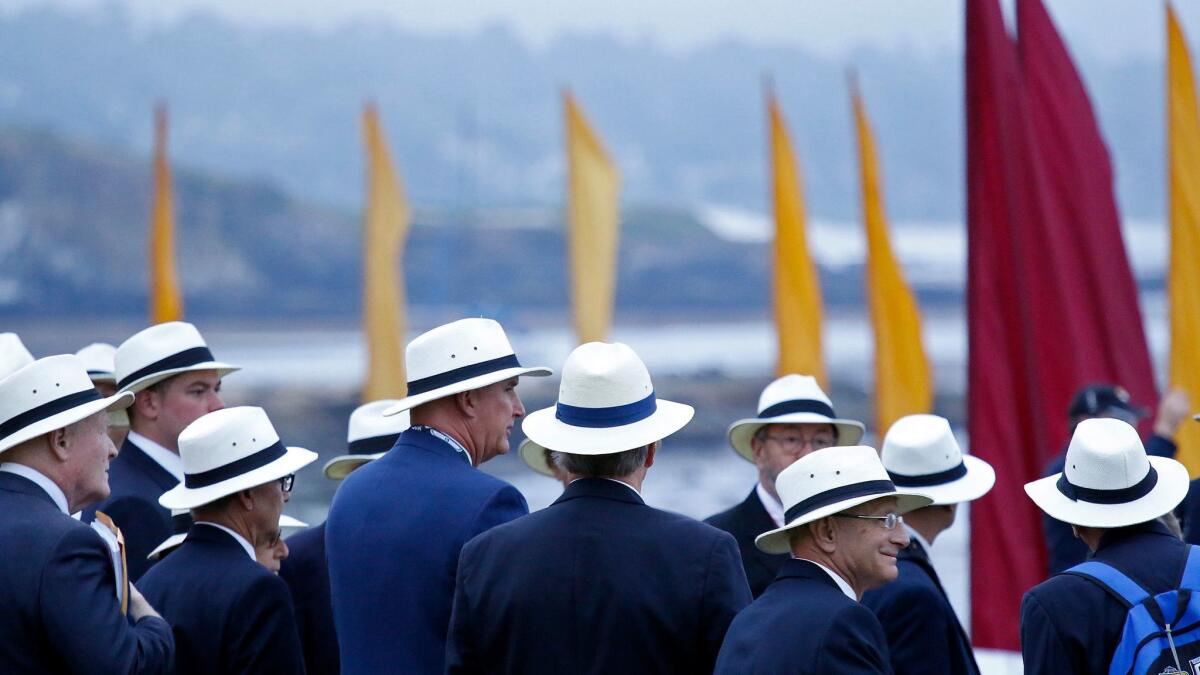
Miao Pu will make her debut as a Pebble Beach entrant this year. The Chinese actress, whose car collection includes 13 rare and historic vehicles — among them two rare Rolls-Royces, two vintage Ferraris, two historic Jaguars, and two collectible Mercedes Benzes — was invited to show her 1940 Aston Martin Speed Model Type C at Sunday’s event.
She felt like a minority last year, when she attended her first Pebble Beach event at the invitation of the auction house RM Sotheby.
“When we were at Pebble Beach Concours last year, we saw hardly any Chinese or Asian faces,” the actress said in an email.
Other non-European visitors have had a similar feeling.
Manvendra Singh made his first trip to Pebble Beach seven years ago and has attended every year since. The respected Indian automotive restorer and historian, invited by the event organizers to act as honorary judge, said that he felt “lonely.”
There weren’t other Indian judges, and few Pebble participants understood India’s history with collectible vehicles, once favored by the country’s royal families.
Some local attendees have felt out of place too.
Chanterria McGilbra is an African American Ferrari fancier from San Francisco. At her first Pebble Beach last year she found “a very Caucasian crowd.”
As founder of the all-female Ferrari car club Prancing Ponies, which this week hosted Monterey Car Week’s first all-female car show, McGilbra said she has had difficulty finding people with her background who share her passion for fine automobiles — even at this automotive Mecca.
“I am struggling to find another African American woman to show her car,” McGilbra said.
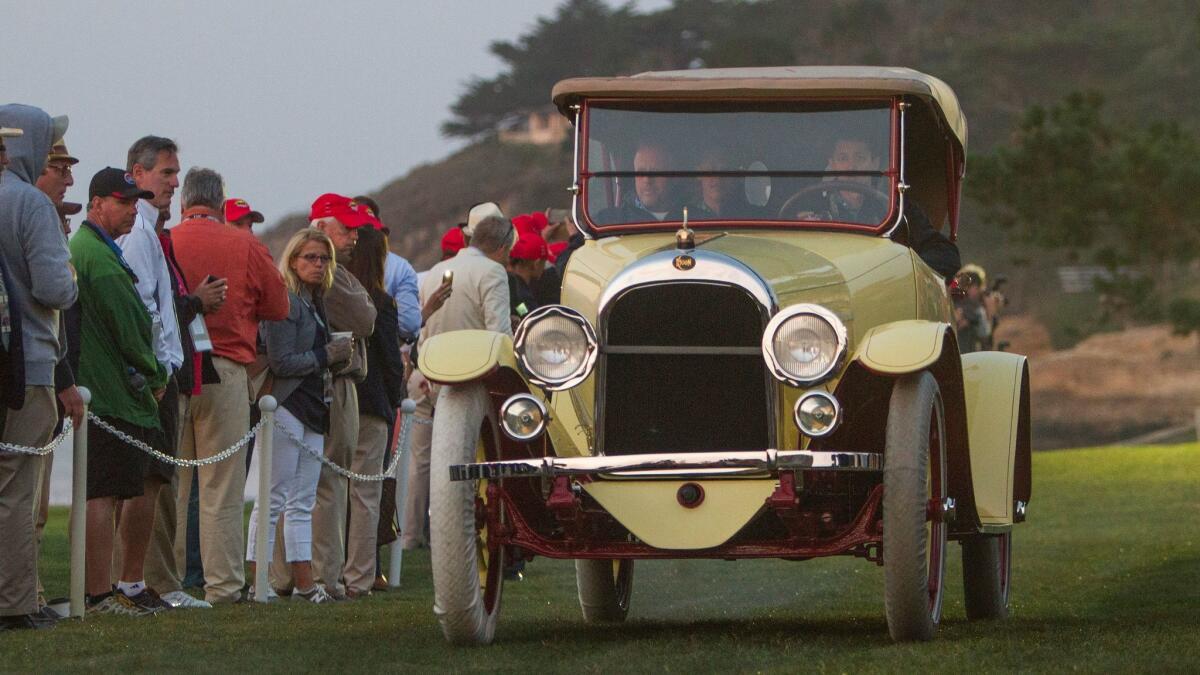
Car aficionados come to the Monterey Peninsula each year to participate in road rallies, race their historic cars at nearby Laguna Seca and compete for awards with fellow collectors.
It’s an expensive hobby. A collectible Ferrari, Jaguar or Delahaye can cost several million dollars to acquire. It can then cost half as much again to restore up to Concours quality — and another bundle to ship to the Monterey Peninsula. (Most major collectors do this by air.)
One collector who didn’t want to be identified by name said he’ll spend more than $10,000 to show his classic car at Pebble Beach, including the cost of food and lodging for himself, his crew and his detailer — and he’s only traveling from Los Angeles. That doesn’t include the $200,000 he spent restoring the car.
The dollar amounts can be staggering. The week’s auctions have totaled nearly $400 million in sales in recent years. This year, Bonham’s alone will bring more than $100 million in inventory to its one-day auto auction. Ferrari, celebrating its 70th anniversary, is shipping in more than $500 million worth of vintage Italian cars to show at the Concours event.
On Sunday, entrants will roll onto the manicured Pebble Beach golf course greens, many dressed in period clothing to match the era of their cars, and wait while blue-blazered judges decide which will receive blue ribbons and Best of Show prizes.
The cars selected to appear at the show, which has become the creme de la creme of international concours events, often represent the best-known examples in their classes and the work of the world’s finest automotive restoration experts.
That automatically limits the participants to the rich and the very rich — and excludes others.
While Pebble Beach has traditionally attracted many car-collecting couples — Peter and Merle Mullin, Sam and Emily Mann, Helen and Jack Nethercutt, and Dana and Patti Mecum are regular participants — women showing their own cars are still a relative rarity.
“Some men are quite exclusive of women,” said Merle Mullin, who co-founded an all-women’s car rally so she and her friends could drive and navigate their own adventures. “We’re a minority, but it’s changing.”
African American, Hispanic American and Asian American owners are a minority presence too. Though the event organizers said they do not query applicants on race or national origin, and have no statistics on entrants’ ethnicity, the crowd of car owners and spectators is predominantly Caucasian.
“If you look around on the field, you will see a white field,” said Aaron Weiss, a Pasadena car collector and co-founder of the annual San Marino Car Classic. “You just don’t see too much diversity.”
Veteran observers believe there has never been any prejudice on the basis of nationality, race or gender.
“This is a very all-inclusive community,” said Monterey-area car aficionado Gordon McCall, who produces multiple events annually. “I would much rather spend time with the Chinese collector who knows how to use and drive his car than the well-to-do American collector who has his handlers do that.”
Still, some have experienced or witnessed subtle exclusionary behavior.
Collector and restorer Don Williams, who was among the first American vintage car experts to begin establishing ties with Japan and China, was at Pebble Beach last year when a top award went to Chinese entrepreneur Zongmin “Jason” Huang, for his 1923 Rolls-Royce Silver Ghost.
Williams, who is helping Huang establish an automotive museum in Chengdu, said the reception was a little chilly.
“If it was a Frenchman, or an Englishman, or a German, no one would have cared,” Williams said. “But when Jason won, there were people looking at him with what I would not call admiration.”
Wade Kawasaki, who recently became the first Asian American chairman of the powerful Specialty Equipment Market Assn., said that as a young driver he often got a cool reception at the racetrack.
He credits collectors Peter Mullin, Bruce Meyer, Bruce Canape and others for helping bring change to the car culture.
“In the last few years I’m seeing more Asian Americans, African Americans and people from all over the world,” Kawasaki said. “Pebble has become a much more global event.”
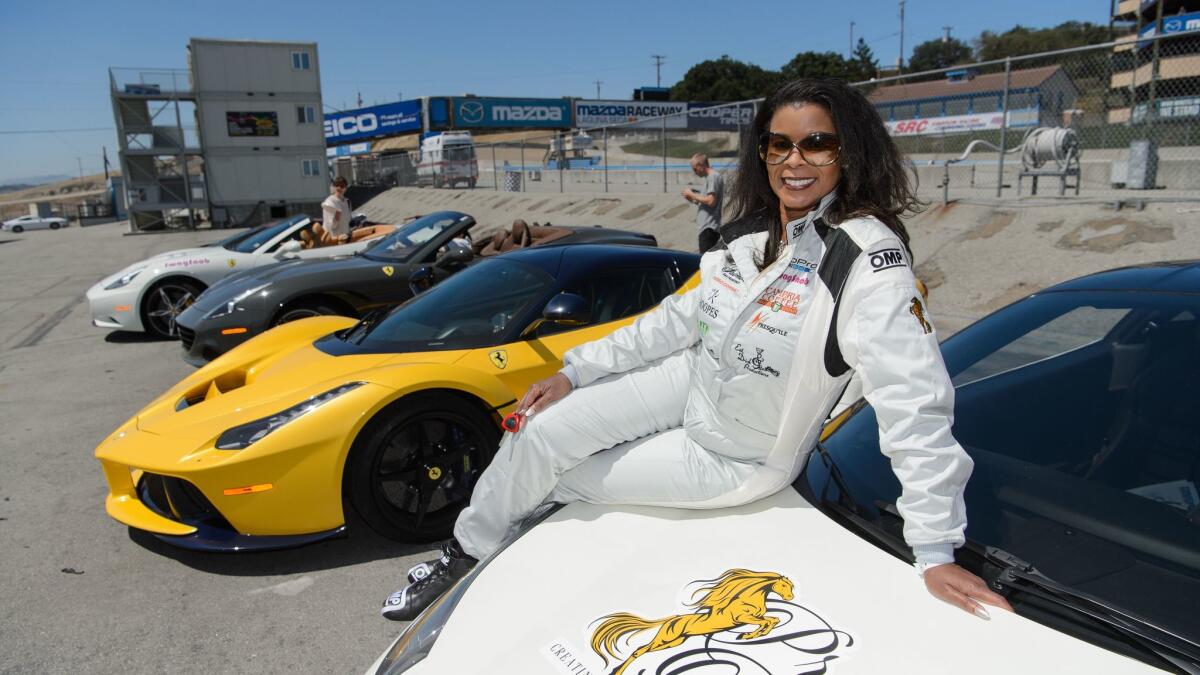
Some minority attendees from far-flung places will notice they have more company this year, festival organizers say, as increased outreach from car companies, auction houses and foreign press brings new players to the peninsula.
Among those bringing cars to the Sunday show will be first-time visitors from India, Thailand, Hong Kong, South Africa, New Zealand, Russia and Ukraine.
Singh said certain collectors from India will attend for the first time, in part to see whether they should include their vintage vehicles in a “Cars of the Raj” category planned for next year’s Pebble.
There will be historically high numbers of foreign journalists, from India, China, Japan and elsewhere. Veteran Concours attendees said members of the foreign automotive press often precede the arrival of collectors from their home countries.
There will also be a lot of Chinese journalists. Organizers say the Chinese press contingent will number between two and three dozen, along with about a dozen reporters from India. Singh will not see any Indian car owners showing their vehicles on the lawn, but he will be joined by at least 12 journalists from India — up from only 1 Indian reporter in 2010, and 4 in 2011.
Invited by Concours organizers, these reporters have been instrumental in popularizing Pebble Beach in their home countries and encouraging local collectors to attend.
Sometimes foreign visitors are brought to their first Pebble Beach events by high-end manufacturers, who are similarly interested in increasing awareness and appetite for fine automobiles in new markets.
Rolls-Royce, for example, has hosted contingents of visitors from China on several occasions, part of the English car company’s attempts to grow ownership there.
“As we’ve brought owners and press in from China, the organizers [of the Concours] have been more than accommodating,” said Gerry Spahn, Rolls-Royce’s head of communications for North America.
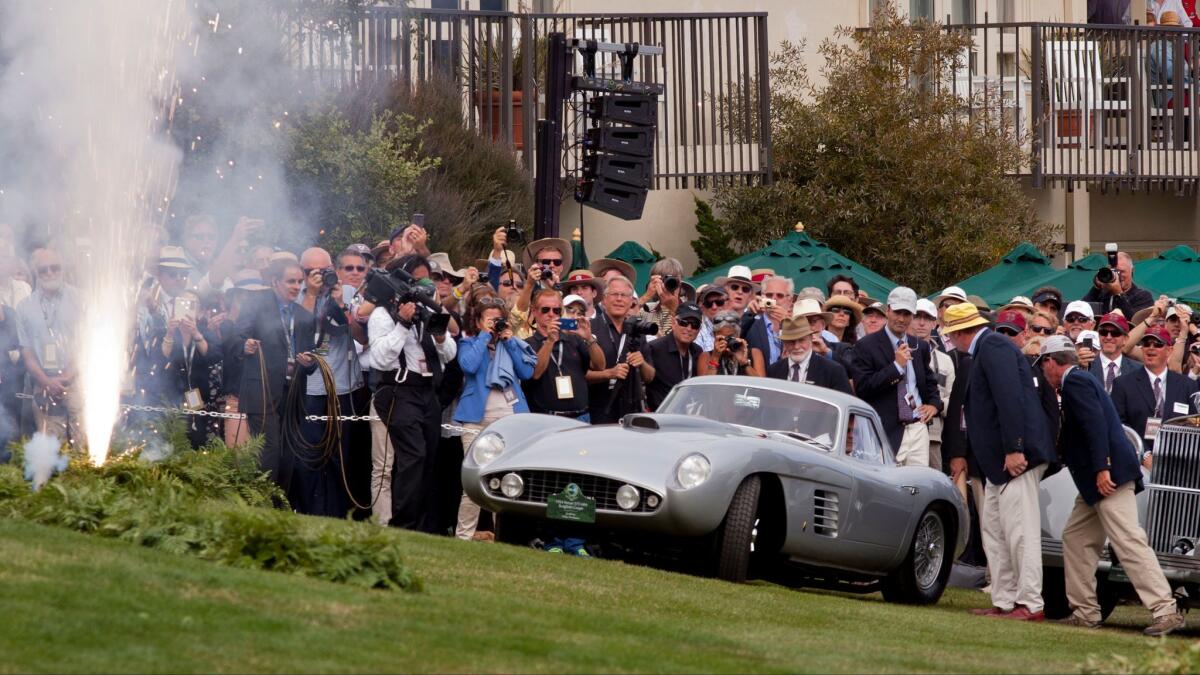
Actress Pu may be unique, but she will not be alone.
This year, she will see a few other women displaying vehicles. Among several female collectors joining her on the grassy lawns will be Kim McCullough, who will act as honorary judge and display a 1954 Jaguar SK120. Ann Lee, who with her late husband Bob showed many cars at Pebble, will bring four cars on her own this year.
A fellow Chinese owner will be competing too. Sportswear entrepreneur Chen Yi-Hong of Beijing will be showing a 1934 Mercedes-Benz 380K Cabriolet, an event spokesperson said.
SEMA’s Kawasaki said there is increasing evidence that the old boundaries are disappearing. The new message, he said, is, “You don’t have to be an old white guy to be in this industry.”
Button agreed, with an emphasis on the guy part.
“Hopefully times will keep changing in the collector car business, but it’s still primarily car guys,” she said. “Anything that brings people together, people of diversity, is a good thing — and cars do that.”







